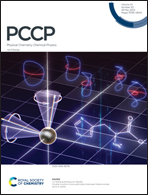Dopant-induced electronic design of redox-active elements in LiMn2O4 spinel structures†
Abstract
Despite the importance of the electronic-level design of inorganic cathode materials for high-performance secondary batteries, studies attempting to clarify the correlation between the electronic structure and performance are relatively scarce compared to the broad range of inorganic cathode materials developed to date. This study highlights that the symmetricity/asymmetricity of eg/t2g orbitals in redox-active elements would be a core factor to determine the degree of the Jahn–Teller distortion of LiM0.125Mn1.875O4 (M = Mn, Co, Cr, Cu, Fe, and Ni) spinel-type cathode materials during the discharging process. The presence of redox-active Mn3+ ions accompanied by a significant collapse in the symmetry of orbital eg during the discharging process is highlighted as the main reason for poor structural durability and electrochemical performance of the cathode material. This limitation can be most effectively overcome by removing Mn3+ ions by adding Ni2+ as a carefully selected dopant. Further investigation reveals that the electrochemical impact of the introduced dopants strongly relies on the change in the symmetricity/asymmetricity of their eg/t2g orbital configurations during the discharging process and the resultant energy benefit/penalty.



 Please wait while we load your content...
Please wait while we load your content...